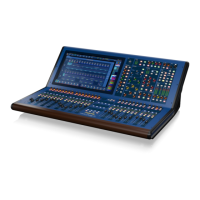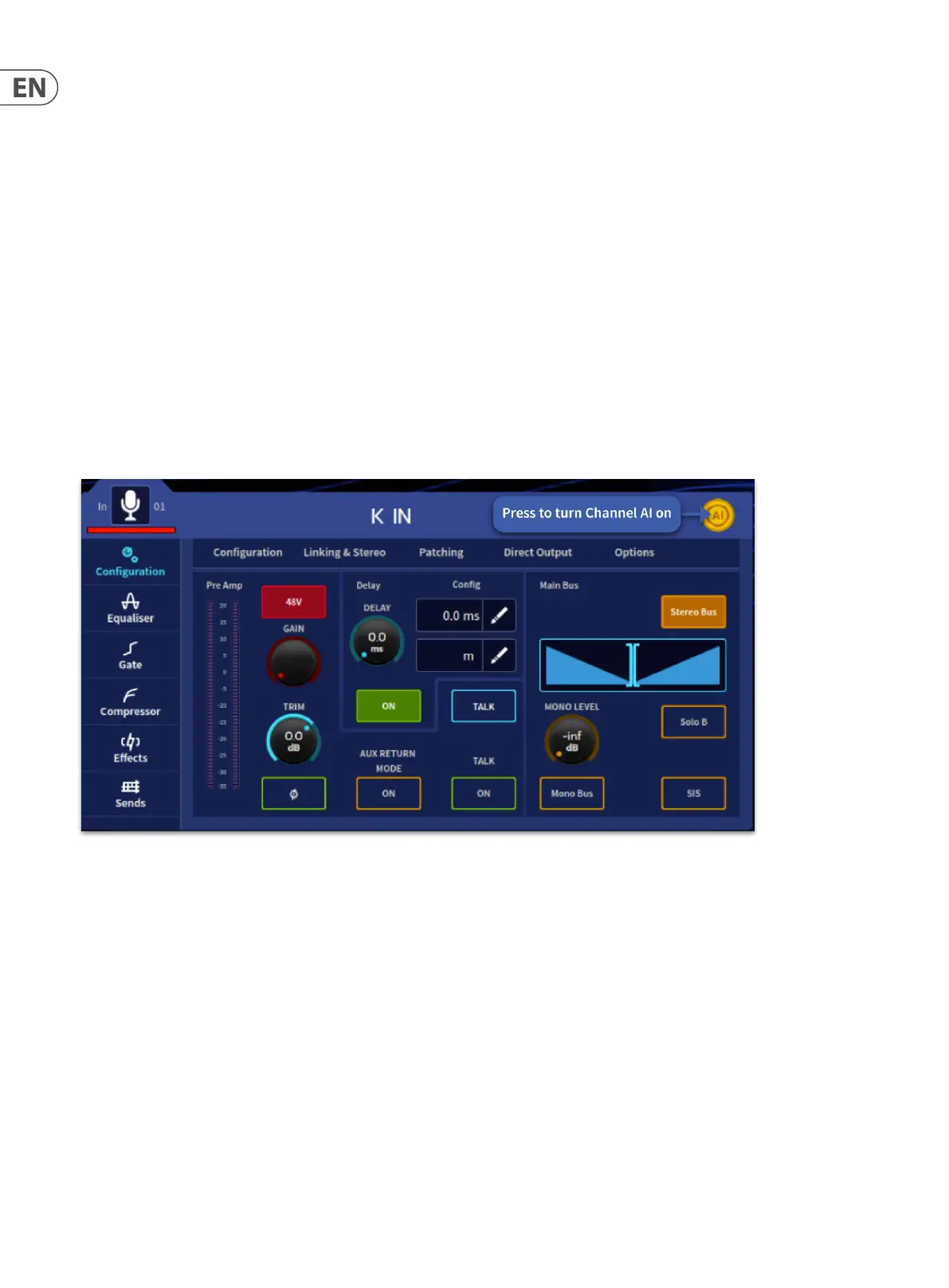298 HD96-24-CC-TP User Manual
Chapter 35. Channel AI
The thought of Articial Intelligence (AI) in a mixing console could be seen as thought provoking, futuristic or even scary. Channel AI is designed to help not hinder, to
suggest, not take over and to give a guide to help improve your sound and workow. The innovative ability to analyse a channel and let the system tell you what the
instrument type may be has many applications. This can save vital set-up time.
What is Channel AI?
Channel AI allows an input channel to be analysed or proled as we call it. This is achieved by capturing a short excerpt from the incoming audio signal, i.e. four
seconds long sample. Onset segmentation is performed on the captured audio. Instrument classication is performed on onset per onset basis. The instrument
classier returns three outputs: channel name, spill detection and condence (quality of the captured audio sample). Currently the instrument classier can detect
the following instruments: Kick; Snare; Hat/Cymbals; Toms; Bass; Guitar; Piano; Vocals. This database will increase over time to include more instruments and their
many dierent variations. Suggestions of the instrument type, spill and condence are based on the Midas database of proled instruments and on models of sound
perception that our research team developed.
Based on further analysis of the captured audio, settings are generated for the following signal processing units: Trim, Equaliser, Gate and Compressor. These presets
are adaptive rather than static, meaning that the suggested settings of each preset derive from the analysis of the audio and are likely to vary depending on the
characteristics of the captured audio. For instance, if you prole a channel during a quiet passage of a song, the trim parameter will be set to higher value than if you
prole a loud passage of the same song.
How to Turn Channel AI on
Press the Channel AI icon to active the function. Once on, channel AI can be used on any input channel. Press the icon again to turn Channel AI o.

